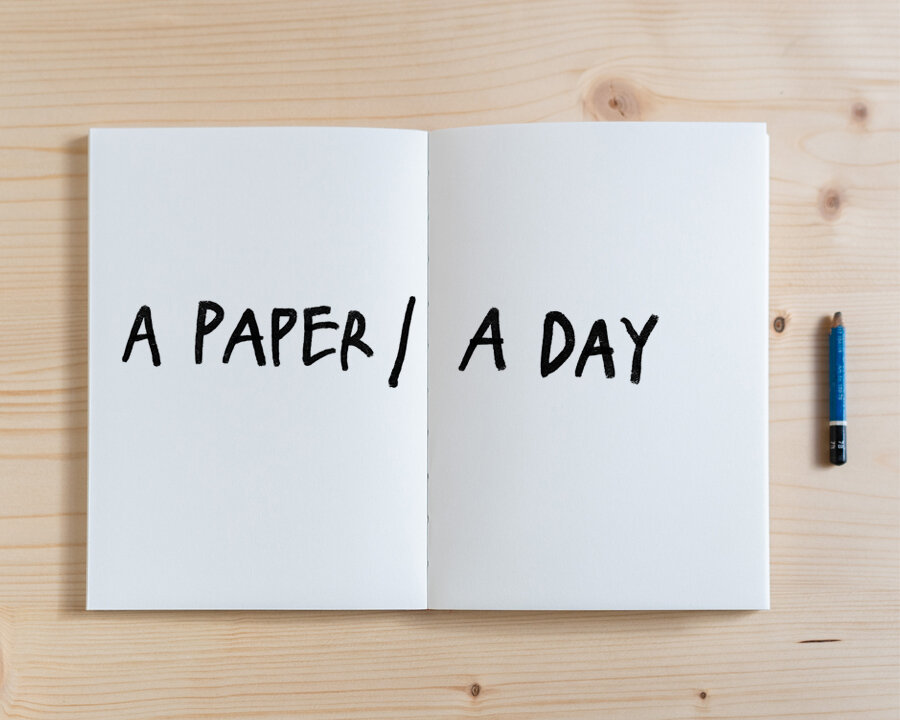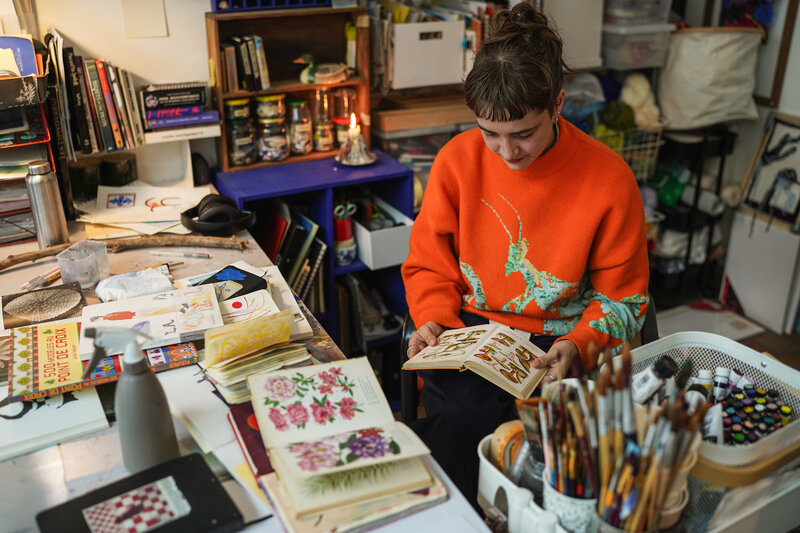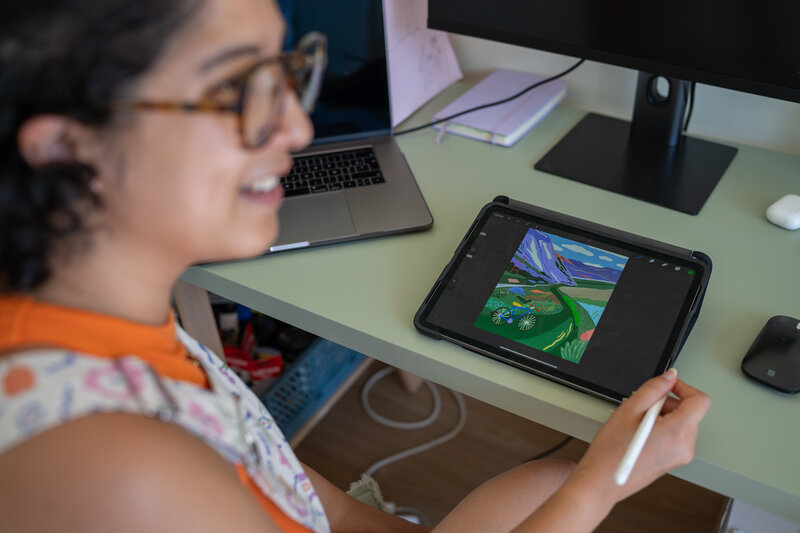The reversed sketchbook of Maarten Derous
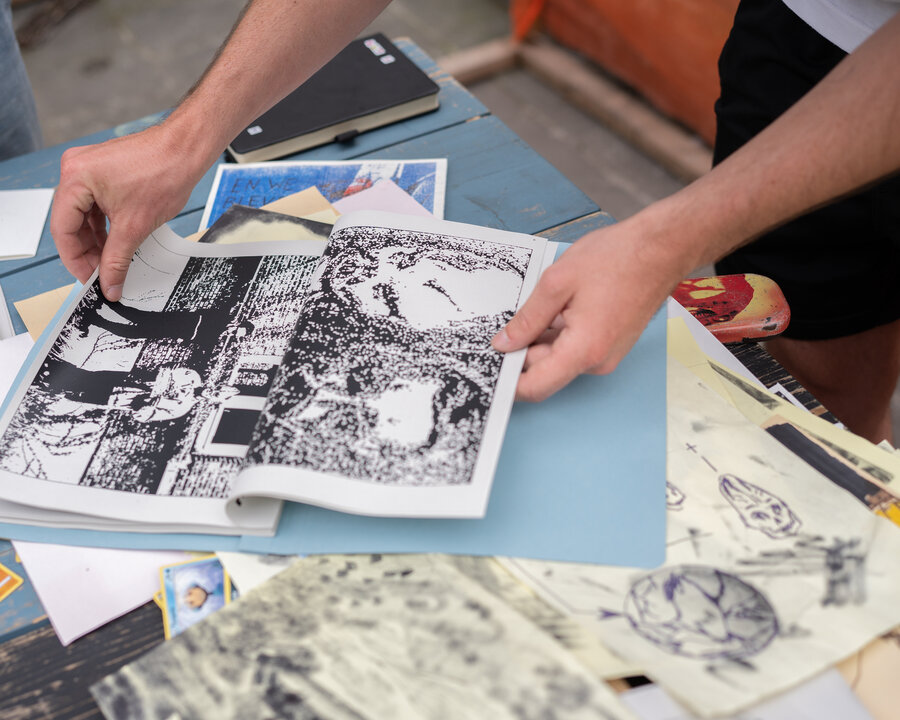
Why limit yourself to a uniform sketchbook of which you can find heaps? How a sketchbook can take all possible forms is illustrated by Maarten Derous. He describes himself as a collector who likes to organise his work and at the same time embraces the chaos of his working process. For A paper / a day 2023 we flipped together through his endless sketchbooks.
Do you make drawings in a sketchbook?
Maarten: "Actually, I don't. I have been trying again and again but I don't seem to succeed. I prefer to draw on individual pages and then collect those drawings into a book or publication. It happens often that several sketches or prints are related to the same theme, which I then bundle into boxes or a folder. There is then no real story in that collection, I rather see it as a sort of archive album.
Basically, I work with sketchbooks in reverse, by making loose work and only bundling it as a last step. I like this way of working. It can even be messy, I know that after some time I will start organising it anyway. In separate packages. I guess that's the collector in me, I like to bundle things together."
How do you manage this when you are on the road?
Maarten: "I always have drawing supplies in my bag: my Jurassic Park pencil case and some paper. Loose sheets or a cheap block. You could also consider a block like this as a sketchbook, but I don't get tired of it easily, I can just tear off the pages. For the loose sheets, I specifically search for discarded paper, in the trash or in thrift shops. Often this is damaged or faded, no proper drawing paper anyway, but I find it works. My work does not suit an ordinary white booklet. In such a pre-made booklet, you are also bound to a certain size, while I like to switch sizes a lot.
I often drag the paper I have collected around for weeks. I already sense that I can use it, but can't draw on it right away. It's a process that has to grow."

How would you describe your work, what do you draw?
Maarten: "I often dive obsessively into a subject. The best example of this is my master project at KASK, for which I focused on an alien for a whole year. Another example is a dino-zine I made: I took selfies with dinosaurs and drew the skeletons. I never actually published the booklet. As a matter of fact, those dinosaurs frequently return: as a child, I had an obsession with them, drawing them as best I could. Then suddenly I stopped, but look: now they are back. I started drawing early on too, in kindergarten. Back then I traced the lines of colouring books with chalk paper.
My work is quite humouristic, but there are profound layers of meaning in it for me. I often find those too intense, so I give them a fun twist. So people see my work as funny, but if you look further, you will find much more to it."
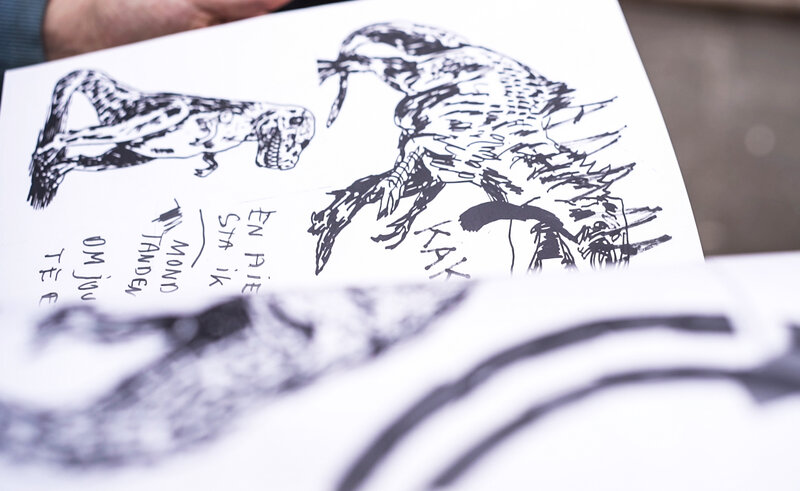
How do you start?
Maarten: "I often base my drawings on photos I find online or in books. Especially if I don't know exactly what to draw, I consciously look for good pictures. Or I refer back to old family photos. Sometimes I draw those photos in detail, more often I draw a piece of it and complement it with a piece of another photo. So I make collages without cutting and pasting, I cut them already in my head."
What materials do you like to work with?
Maarten: "This changes regularly and in stages. Black coloured pencils were my favourite for a long time, that fase is returning somewhat. Last year, I often drew on toilet paper with alcohol pen. The paper completely soaks up the ink of the markers, I discovered you can use this as a material for drawing. It causes beautiful results.
I do stick to certain pencils that really give beautiful black colours. I don't often turn to colour, but find it more interesting to have a coloured background, such as yellow or pink paper."
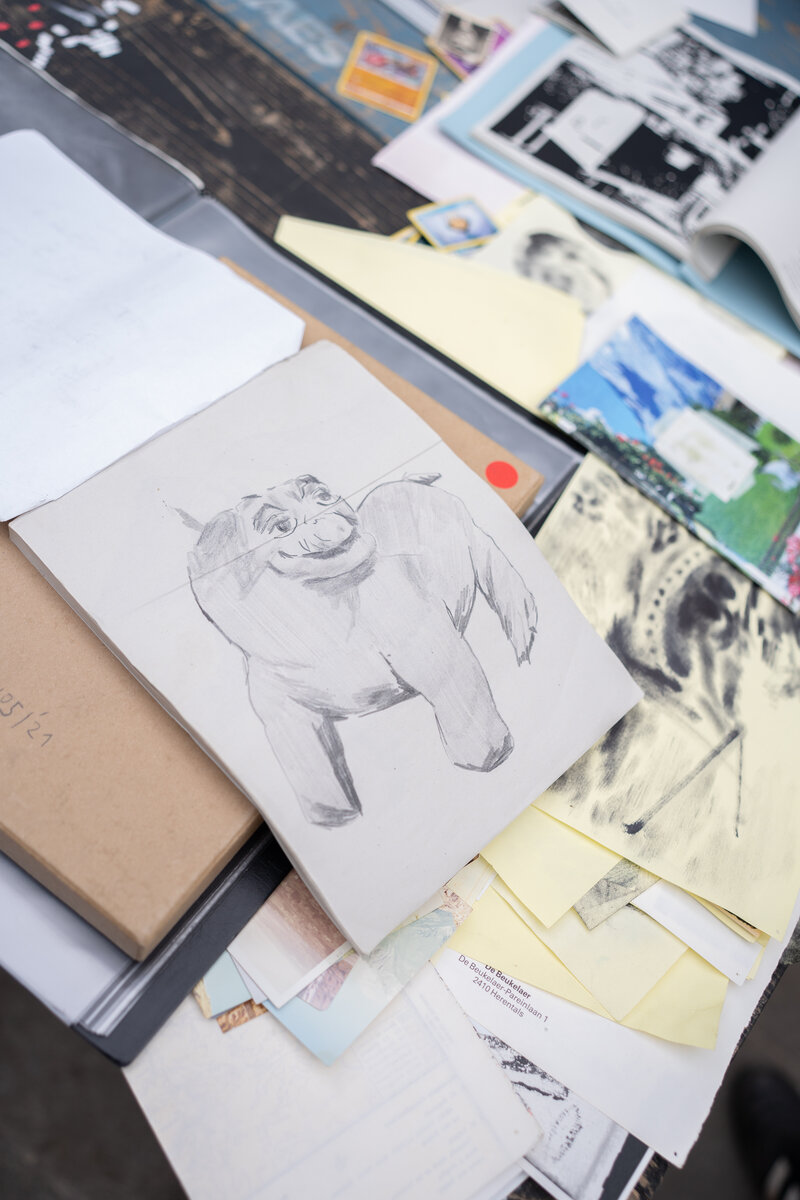
Where do you get your inspiration?
Maarten: "Mainly from music. I listen to a lot of music and like to work with those lyrics. I extract concepts from it and incorporate them into my drawings. Musical lyrics also encourage me to write, both music and stories. Although I'm still exploring.
What are you working on now?
Maarten: "At the moment, I'm reflecting more than I'm drawing. I just graduated from KASK and I now feel the need for a concept, something I can work towards. I don't just want to make drawings that are all unconnected."

